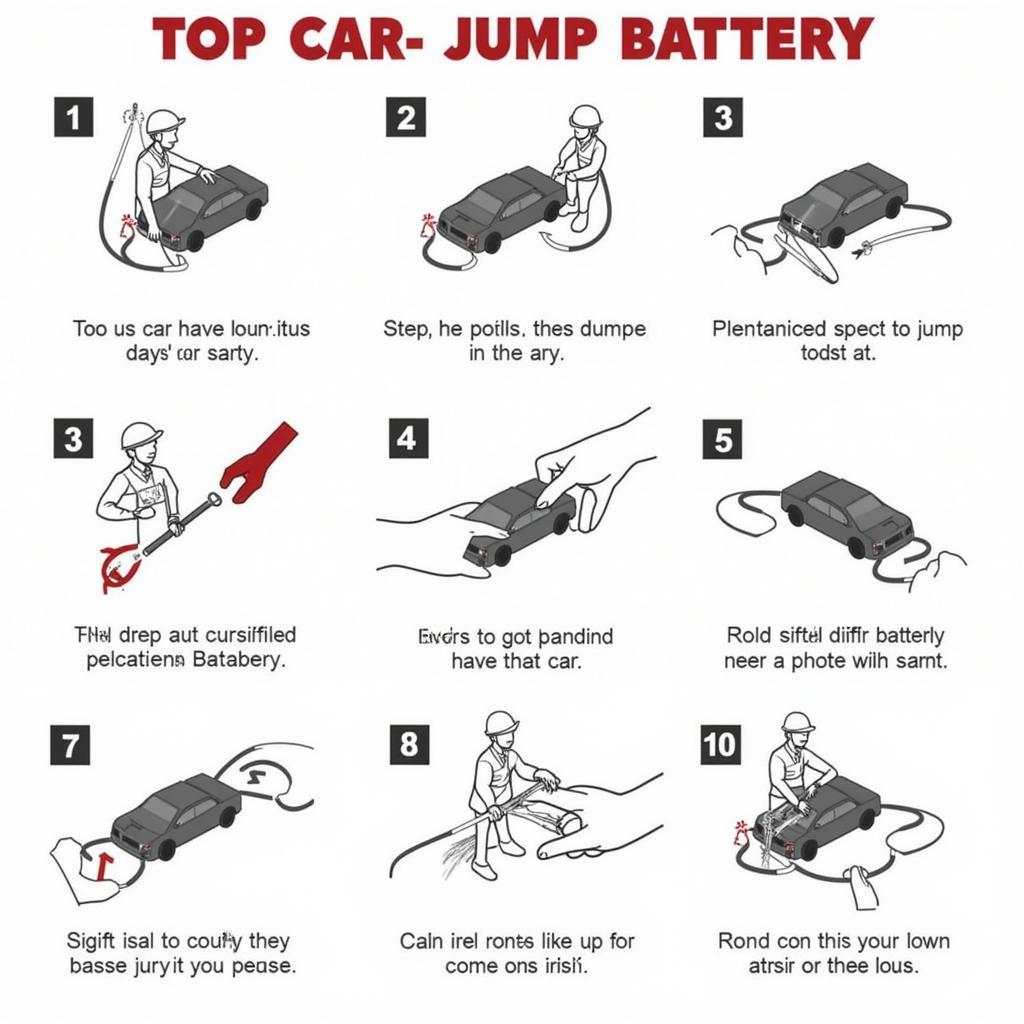If your battery won’t jump, you’re not alone. This frustrating situation can leave you stranded and searching for answers. This guide provides a detailed approach to diagnosing and resolving the issue, from simple checks to more advanced solutions, empowering you to get back on the road. We’ll cover everything from parasitic drains to faulty alternators, ensuring you have the knowledge to tackle this common car problem. After reading this, hopefully you’ll be able to jump your battery successfully or at least identify the root cause of the problem.
Common Reasons Your Battery Won’t Jump
There are several reasons why a car battery might refuse to jump-start. Identifying the underlying cause is crucial for effective troubleshooting. Is your car battery completely drained? Perhaps it’s something more complex. Let’s explore some common culprits.
Is it the Battery or Something Else?
Sometimes, the problem isn’t the battery itself, but other components within the electrical system. A faulty alternator, for example, can prevent the battery from charging even after a successful jump. Corrosion on battery terminals can also impede the flow of electricity. Even extreme temperatures can impact battery performance. You might want to check out some cold weather car battery issues for more information.
The Parasitic Drain Dilemma
A parasitic drain is a sneaky culprit that slowly drains your battery even when the car is off. Identifying and eliminating these drains is crucial for maintaining a healthy battery. Common causes include interior lights left on, faulty door switches, or malfunctioning electrical components.
 Parasitic Battery Drain Test
Parasitic Battery Drain Test
Step-by-Step Jump Starting Procedure
Even with a good battery, incorrect jump-starting procedures can be ineffective or even dangerous. Here’s a detailed guide for jump-starting your car safely and correctly:
- Safety First: Ensure both vehicles are parked on a level surface, engines off, and parking brakes engaged. Wear safety glasses and gloves if available.
- Positive to Positive: Connect the positive (red) cable clamp to the positive terminal of the dead battery. Then connect the other end of the red cable to the positive terminal of the good battery.
- Negative to Ground: Connect the negative (black) cable clamp to a clean, unpainted metal surface on the engine block of the dead car, away from the battery. Connect the other end of the black cable to a similar ground point on the donor car.
- Start the Donor Car: Start the engine of the car with the good battery and let it run for a few minutes.
- Try Starting the Dead Car: Attempt to start the car with the dead battery. If it starts, let it run for at least 15-20 minutes to allow the alternator to recharge the battery.
- Disconnect Cables in Reverse Order: Once the dead car is running, disconnect the cables in the reverse order of connection, starting with the black cable on the ground point of the dead car, then the black cable on the donor car, the red cable on the donor car, and finally the red cable on the now-running car.
If you’ve recently installed a new battery drained in car, this process should get it running again, provided the alternator is working correctly.
 Car Battery Jump Start Procedure
Car Battery Jump Start Procedure
When to Seek Professional Help
Sometimes, even after following these steps, your battery wont jump. If you suspect a more serious issue like a faulty alternator or complex electrical problems, seeking professional assistance is recommended. A qualified technician can diagnose and repair the issue using specialized diagnostic tools and software. If you own a Land Rover, you might be interested in reading about common discovery 4 battery problems. You may also want to review techniques for jumping off a dead car battery.
Conclusion
A battery that won’t jump can be a significant inconvenience. By understanding the common causes, following the correct jump-starting procedure, and knowing when to seek professional help, you can effectively address this issue and get back on the road. Remember to prioritize safety and address the underlying cause to prevent future occurrences.
